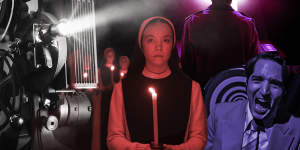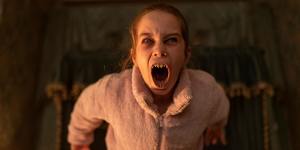One genre,however,seems to be staying afloat. Independent horror movies have been quietly attracting decent audiences since the beginning of the year,suggesting you don’t need bloated budgets or big-name distributors to turn a profit.

Indie horrors like Immaculate and Late Night With The Devil have held their own while other large-scale films have struggled.Compiled by Bethany Rae
In March,the nun-centered horror starring Sydney Sweeney,Immaculate, enjoyed the strongest opening day of any movie distributed by indie studio Neon,outpacing other major hits like Oscar-winnersParasite andAnatomy of a Fall. It raked in over $8 million over its opening weekend in the US,and has since grossed over. This means it more than doubled its production budget,which was around $13 million.
Immaculate played on 197 screens in Australia,yet still grossed over $1.1 million. ConsideringThe First Omen,a 20th Century Studios production which reportedly cost $30 million to make,grossed,this was quite a success for the independent film.
Australian brothers Cameron and Colin Cairnes’ sleeper hitLate Night With The Devilalso set an opening weekend record for its independent distributor IFC Films. Filmed entirely at Melbourne’s Docklands studio with a predominantly Australian cast and crew,it was said to have a,with some outlets reporting it spent only around. Despite that and a relatively narrow theatrical release (it only ran in about 1442 theatres in the US),it managed to gross over.
Locally,the film made over $886,696 across just 82 screens. This was fairly impressive for an indie horror in Australia,consideringInfinity Pool – also an independently distributed horror starring recognisable leads (Mia Goth and Alexander Skarsgård) – made about $139,000 last year. Notably,this was only across 30 screens.
Gregory Dolgopolov,the director of Queensland’s,says the success of these smaller-scale movies largely comes down to the loyalty of their audience.
“Unlike most films at the cinema,horror doesn’t rely on mainstream tastes or buzz,” he says. “Those who enjoy horror have a deep commitment to the genre,and they’ll go to see it at the cinema every time,really making an event of it. It may not be a huge audience,but they’re super consistent,they’re rusted on,and they mature alongside the genre.”
The breadth of horror also helps,Dolgopolov adds,noting that it contains more subgenres than most other types of film (vampire,slasher,paranormal,creature feature,etc.) and is therefore less likely to feel overdone,or monotonous.
A24’s I Saw the TV Glow,a 90s coming-of-age horror-thriller,hasn’t had an Australian release yet but it has done particularly well among Gen Z and LGBTQ audiences since its US release,making after showing in fewer than 500 theatres.
Granted,not every horror film has performed well this year. Larger-budget productions like Universal Pictures’Abigail or Blumhouse’sNight Swim andImaginary made minimal returns compared to their higher budgets and wider marketing campaigns. In fact,Night Swim,which made during its opening weekend in the US,became the lowest-grossing debut for a wide-release Blumhouse movie since the Firestarter remake in 2022.

Many larger-scale horrors,such as Universal Pictures’ Abigail,have been struggling at the box office.Universal Pictures
The poor performances of these films could arguably come down to their cost. Abigail took nearly $42 million to create,whileNight Swim took about $22.5 million. Larger budgets create greater pressure to perform well at the box office,especially during its first week,as word-of-mouth travels. However,Mark Ryan,an expert on the Australian horror movie industry at Queensland University of Technology,says independent horrors are not bound by such pressures.
“It’s a low-budget genre that doesn’t need A-list actors or high production values to deliver strong box-office returns. Consequently,it has potential to generate high returns with less risk for filmmakers,” he says. “Blumhouse as a studio only makes movies between $3 and $7 million,and it regularly makes highly progressing movies.”
Because of their low-cost,low-risk approach,horror films have historically remained consistent,or,even better,helped boost the cinema industry. For example,Ryan notesThe Blair Witch Project,which grossed over $371 million globally in 1999. It became the 10th most profitable film of the year despite being one of the cheapest (),beating popular films likeAmerican Pie andEyes Wide Shut.
Find out the next TV,streaming series and movies to add to your must-sees..
